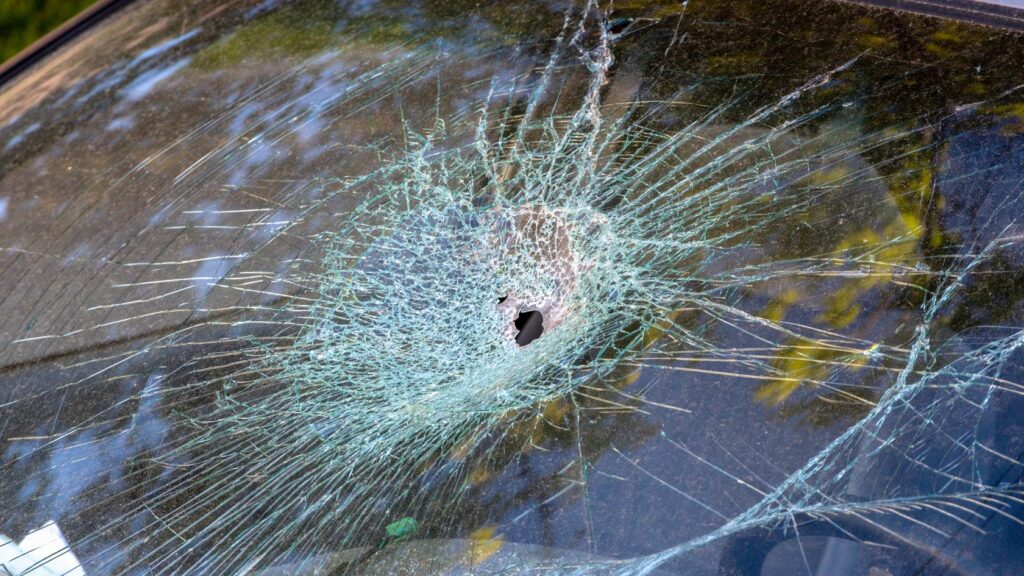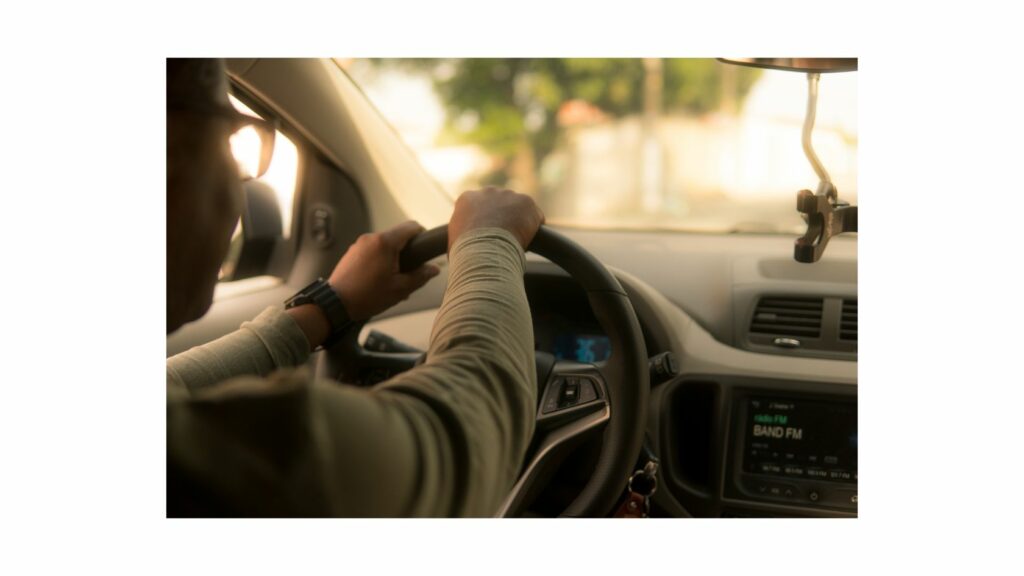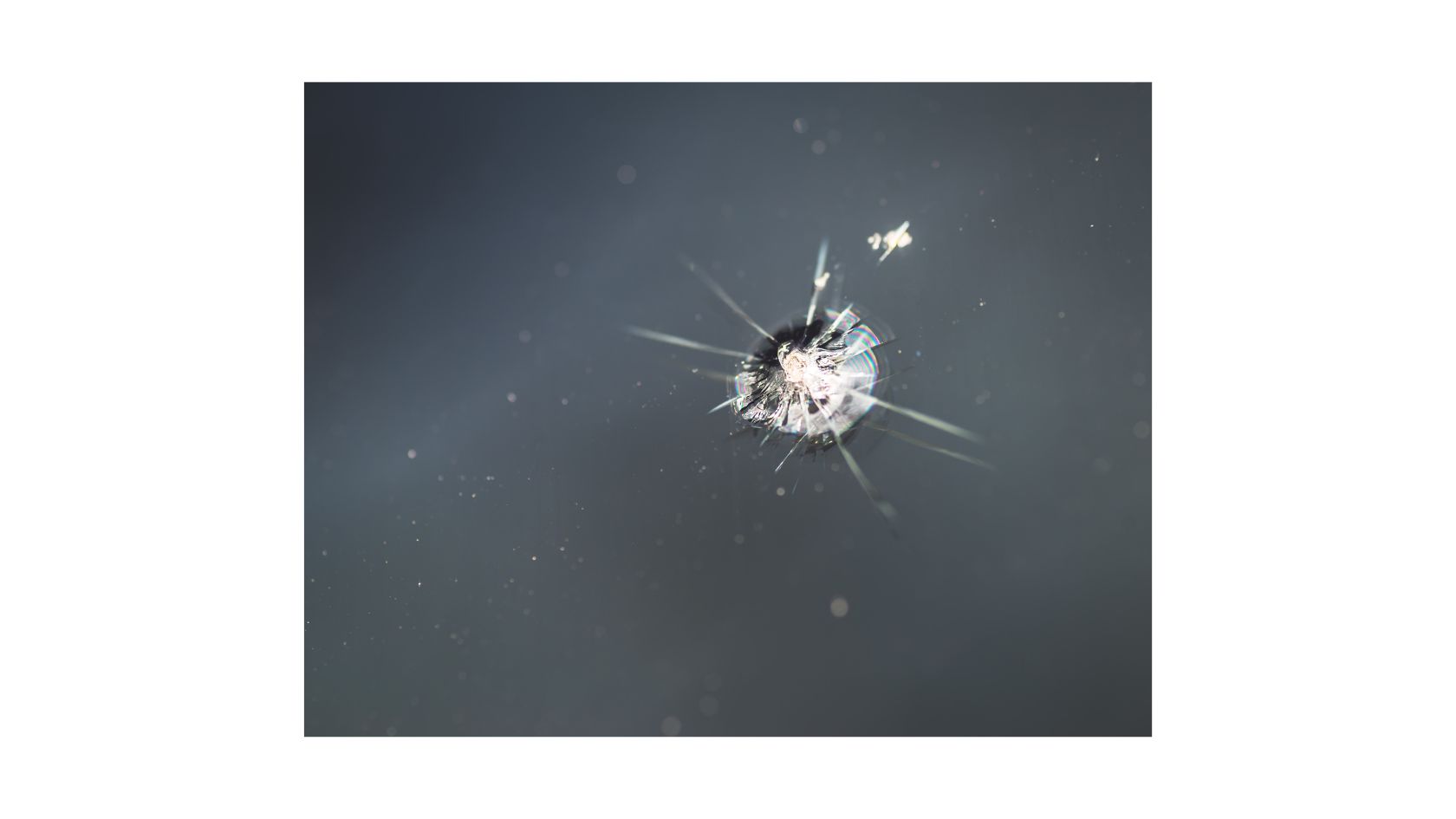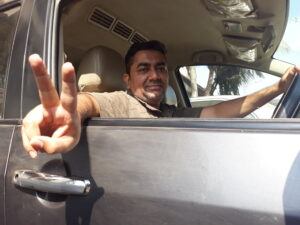
Have you ever noticed a crack on your car windshield suddenly? If yes, many questions will swirl in your mind – Can a cracked windshield break while driving? How did it get there in the first place? What are the common causes of windshield cracks?
It’s crucial to understand the implications of a cracked windshield, as it poses potential risks to both your safety and the integrity of your vehicle.
So, in this informative blog, we will delve into the intriguing realm of windshield cracks and unveil the truth behind this enigmatic occurrence.
We will not only address the pressing concern of whether a cracked windshield can shatter while driving, but we’ll also explore the preventive measures to minimize the risk of windshield damage from cracks. So, remain engrossed till the end!
Can a Cracked Windshield Break While Driving?
A cracked windshield can develop more cracks and grow in size while driving, but it is very unlikely that it will break and shatter completely.
However, the integrity of the windshield is compromised when it develops cracks. Such conditions make the windshield more susceptible to shattering upon heavy impact or abnormal driving conditions.
Technically, car windshields are designed not to completely shatter in normal driving situations. Modern vehicles use laminated glass that meets stringent safety standards, reducing the risk of windshields shattering into pieces while driving.
They are made of two layers of glass with a PVB layer sandwiched between them, which ensures the glass remains intact even when cracked.
On the contrary, rear windshields are different from front windshields. When cracked, rear windshields immediately shatter into small pieces due to tempering.
To summarize, driving with a cracked windshield can lead to the crack spreading and compromising the integrity of the windshield, but it is unlikely to result in the windshield completely breaking or shattering immediately except for exceptional cases under heavy impact.
Circumstances leading to windshield cracks shattering/breaking while driving
While windshields are designed with layers of laminated glass and a PVB interlayer to enhance durability, certain situations and circumstances could lead them to shatter or break while driving:
Accident/Crash: Windshield cracks are bound to spread with vehicle movement. As a result, you lose a certain amount of visibility which could lead to minor crashes or accidents.
The force of collision during an accident can exert immense pressure on the windshield, causing cracks to expand and possibly shatter. Even a minor fender bender can compromise the structural integrity of the glass leaving it in splits while you drive.
Sudden movement or rollover: You can’t avoid bumping over the potholes or taking sharp turns suddenly while maneuvering the vehicle.
In such scenarios, the windshield which is already subjected to substantial stress due to the spreading of cracks may succumb to the drastic movements and rollovers of a vehicle leading to complete shattering.
Extreme Temperature Fluctuations: This refers to a situation of driving in scorching heat and your car cabin is freezing cold. This contrasting change in temperature can aggravate existing cracks into potential shattering.

Another impact of severe weather is hailstorms. It can wreak havoc on windshields in good condition, so you can imagine the damage it can cause on a cracked windshield.
Hit by On-Road Forces: Projectiles like pebbles, gravel, stones, rocks, or debris hurled by passing vehicles or kicked up by road traffic can impact the windshield with force.
In normal conditions, this can cause chips and cracks on a faultless windshield however same forces can lead to significant damage to an already cracked windshield that can eventually lead to shattering during continued driving.
Types of windshield cracks and their risks while driving
While chances of a cracked windshield shattering or breaking completely while driving is rare understanding the various types of windshield cracks and their associated risks is essential for ensuring your safety on the road.
Windshield cracks can vary in size, shape, and location, and each type poses unique hazards. Here are some common types of windshield cracks and the potential risks they can present while driving:
Bullseye Crack: Resembling a circular shape with a dark spot in the center, a bullseye crack is usually caused by a high-velocity impact.
While small bullseye cracks may not immediately obstruct your view, larger ones can compromise visibility and lead to distractions, increasing the risk of accidents.
Half-Moon Crack: As the name suggests, this type of crack resembles a half-moon shape but is very much similar to a bullseye crack.
Half-moon cracks often occur due to a direct hit from a small object like a pebble or stone. If left unaddressed, these cracks can spread and impair your vision, making it unsafe to drive.
Star Crack: Characterized by multiple lines radiating from a central impact point, star cracks often result from objects striking the windshield with force.

Depending on their size and location, star cracks have the potential to obstruct your view and affect the overall structural integrity of the glass.
Combination Crack: Combination cracks are a mix of different types of cracks, combining characteristics of the bullseye, half-moon, or star cracks.
The complexity of these cracks can make repairs more challenging, and they may worsen over time, posing significant risks while driving.
Can you drive with a cracked windshield?
After knowing the causes and types of windshield cracks if you still want to drive the vehicle then here are the risks you may have to face while driving:
Visibility Impairment
Do you think you would be able to drive with a cracked windshield as you drive normally? Of course not!
Even when you have minor cracks on your windshield it will impair your visibility especially if the crack is in direct line of sight. The driving may become more disturbing in low light or rough weather.
Normal sunlight could also become a distraction with its reflection causing blinding glares and increasing the risk of collisions because of cracks.
Structural Integrity at Risk
Your vehicle’s windshield is more than just a piece of glass; it’s a critical safety component that protects you from road hazards and helps maintain the structural integrity of your car.
From a vehicle design perspective, a windshield is instrumental in providing a certain percentage (40% to be precise) of structural strength to the car roof.
So, when there are cracks on a windshield it weakens the glass compromising its capability to tolerate the on-road pressure. As a result, the compromised windshield may lead to the collapse of the car’s roof, resulting in severe injuries to passengers while driving.
Accidents endangering lives
Windshields stand as a barrier to protect the driver and passengers during accidents. However, when the protection itself is damaged the impact of even small accidents could become fatal.
A cracked windshield can’t withstand the impact of a front-end collision, endangering lives. On top of that, if you are not a safety freak avoiding wearing seatbelts quite often then be prepared to get ejected from the car in the absence of windshield protection.
Safety hazards
The windshield is a part of the safety plan and also aids proper airbag deployment, ensuring they inflate toward passengers during a collision.
Similarly, windshields are typically made of laminated glass, which prevents glass from shattering into sharp shards upon breakage.
However, if the windshield already has cracks and your car meets a collision it can shatter the glass upon airbag deployment, causing malfunction and exposing occupants to fatal injuries.
Violation of local regulations
It’s crucial to be aware of the local regulations and laws regarding cracked windshields in your area.
Some places have strict rules regarding windshield damage, and driving with a cracked windshield might result in fines or citations.
So, while driving with a minor crack may be feasible for a short distance, it’s essential to prioritize your safety and the safety of others on the road.
If you have a cracked windshield, it’s best to consult a professional to assess the severity of the damage and determine the appropriate course of action, whether it’s a repair or windshield replacement.
Remember, maintaining a clear and undamaged windshield is vital for safe and comfortable driving. Instead of continuing to drive, follow below preventive measures to ensure the safety of yourself and your passengers on the road.
Preventive measures to mitigate the risks of a cracked windshield
Timely Repairs: Address even the smallest chips and cracks promptly. Timely repairs can prevent them from spreading and save you from the cost of a full windshield replacement.
Professional Inspection: Regularly have your windshield inspected by a qualified technician to detect any early signs of damage.
Protective Measures: Consider using windshield covers or parking in the shade during extreme weather conditions to shield your windshield from potential damage.
Proper Installation: Ensure that your windshield is installed correctly by a professional, as improper installation can weaken its integrity.
How long will a cracked windshield last?
There is no specific answer to this question as the lifespan of a cracked windshield can vary depending on several factors.
The longevity of a cracked windshield largely depends on the size, location, and severity of the crack. For example, a small chip or hairline crack on the passenger side might not immediately affect the structural integrity and you can drive for months without repairing or replacing it.
Related Read: Is Glass Cleaner Safe On Car Paint?
However, it’s crucial to remember that even a minor crack can worsen due to temperature changes, road vibrations, or further impacts.
In general, it’s recommended not to ignore a cracked windshield and seek professional evaluation as soon as possible.
Final thoughts
In the realm of automotive safety, the question of whether a cracked windshield can break while driving has captured the curiosity of many drivers.
We’ve explored the common causes of windshield cracks and their potential risks, delving into the various circumstances leading to windshield cracks shattering or breaking while driving.
Understanding that a cracked windshield compromises both visibility and structural integrity prompts us to seek preventive measures.
By adopting timely repairs and avoiding extreme temperature fluctuations and road hazards, we can protect our windshields from further damage.
So, while the possibility of a cracked windshield completely shattering while driving exists, proactive measures empower us to maintain our safety and ensure a smooth, unobstructed view on the open road.
Stay vigilant and prioritize the care of your windshield to embark on a safer driving journey.

